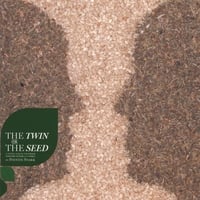
In my first entry on the KCA, I wanted to define what “begins to exist” meant. I defined it as being synonymous, in our experience, with “reorganized from something else.” This showed an equivocation in the KCA, as the universe has never been “reorganized from something else.” (Please remember that I am assuming the view that the universe came into being from nothing - time, space and matter did not exist in any way prior to this. This is one view out of many, but I am assuming it to argue with the KCA).
However, I can understand the potential criticism that “begins to exist” in the KCA actually means to refer to a singular moment where something attains its essential properties, and begins to exist. I think this idea is highly contentious. For instance, this table next to me - when exactly did it begin to exist? Did it become a table at the moment the wood was cut into the shape of a table top? Was it when the last nail was put in place? What if we added another nail? Is it a different table now? Yet we know that the table does exist now and that once it did not. The way to reconcile this is to say that “begins to exist’ is a process - not a singular moment but a combination of moments - which brings about something that we can identity as a separate entity from other things. Hence “reorganized from something else”.
But ultimately, this identification of things only serves our human purposes. In an ultimate sense, all things are the same -made from the same materials - and we might be quite justified in saying that nothing has ever truly come into being - except once! This is a super-reductive, ultimate way of thinking, but the KCA’s concern is with ultimate meaning after all.
Buddhist thought has long recognized that nothing has inherent existence. Nothing is completely fixed. Everything is a flow of change.
But let’s just say this doesn’t work, and “comes into being” is a specific moment, a single frame of time where something has attained its essential properties. Of course the table is different now than at was at that moment, since it has lost atoms, etc. BUT ANYWAY! Let’s assume my first post fails. Let’s look at “cause” instead.
Back to the table (BTW, it is currently supporting a stack of books topped by the Bible, a video camera, a bunch of cello music and a “Gripmaster” to build hand strength....just so you know). What was the cause of this table? Was it the last nail put into place? Was it the human who built the table? Was it the tree that later became the table? And if we pick only one, what was the cause, or causes, of that cause? They would certainly have to be considered causes of the table as well. So the table had many causes.
Let’s reformulate the KCA:
1. Everything that begins to exist has many causes
2. The universe began to exist
3. Therefore the universe has many causes.
This is probably not too satisfying to proponents of the KCA. So let’s say we can group causes together and call all of them together one cause. But as we have shown, identifying any one cause, or even a group of causes, as THE cause is arbitrary. If we continue to zoom out (the table to the tree to the previous tree to the sun to what caused the sun, etc.), we see that the true cause of this table at this exact moment is all previous states of the universe. Can we reconfigure the KCA this way?
1. Everything that begins to exist has a cause which is all previous states of the universe.
2. The universe began to exist
3. Therefore the universe has a cause and it is all previous states of the universe.
This is obviously non-sequitur reasoning.
Perhaps some will argue the a cause and its effect are simultaneous. Bill Craig uses Kant’s example of a ball resting on a couch. The dimple in the couch is the effect, the ball is the cause. They are simultaneous. Craig does not go on to mention Kant’s reflection that a dynamic relationship is still implied. The dimple requires the ball, but the ball does not require the dimple. So are they truly simultaneous? The way to argue this is that even if a cause and effect can be simultaneous (pushing down on one end of a seesaw elevates the other end), then the potential for the cause must still exist prior to the cause. This way cause and effect can be simultaneous, but the obvious dynamic relationship is still accounted for. I had to “cause the cause” in the case of pushing down the seesaw. I had to place the ball on the couch. There is still an aspect of dynamic chronology here.
If God’s action and the beginning of the universe both occurred simultaneously, then we might just as easily argue that the universe caused God’s action, rather than the other way around. If we argue that this cannot be, what’s our reason? We would argue that God has the potential to create the universe, but the universe does not have the potential to create God (unless you’re an atheist!). So if God must have the potential to be the cause, there is still a time-oriented relationship despite attempts to avoid it. The potential for a cause exists prior to a cause.
Just to be thorough (sorry), let’s consider the possibility that a cause can occur after an effect. This may seem weird, but time IS weird. However if the cause of the universe happens after the effect, then this cause may not have happened yet, so it might make sense for the universe to appear as if it has not been caused.
Once we start speculating outside of space and time we are wondering into fascinating, yet paradoxical areas upon which it would be quite unwise to build a belief system. To be fair to traditional theists, it seems to me that ANY explanation of the origin of the universe is utterly bizarre - not just ones invoking a conscious agent as the cause. It could be true that God caused the universe, my emotions tell me that something must have happened, but I think it is unwise to suggest that this conclusion is logically necessary.
What it comes down to is that, as we are arguing it here, the origin of the universe was a singular event. So looking around inside the universe, drawing inference from what we see, and applying it to the beginning (of all the things we are drawing inference from!) is highly problematic.



No comments:
Post a Comment